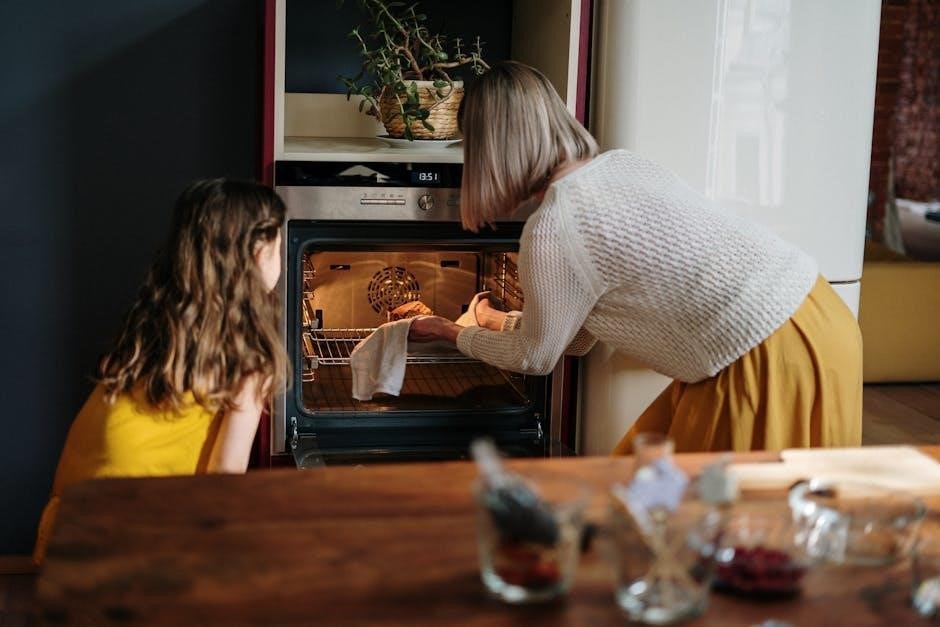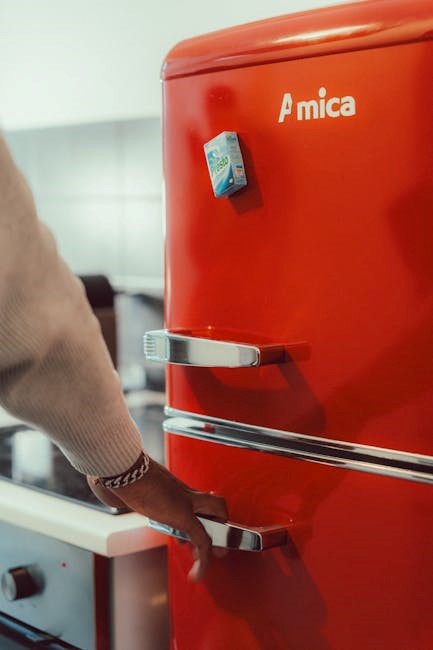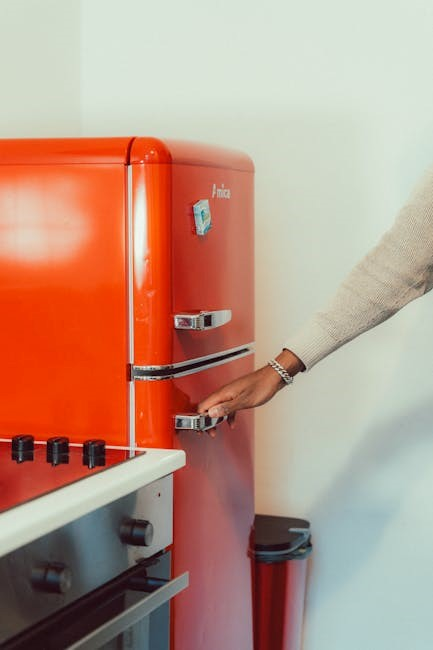
Kenmore Refrigerator Model 795: A Comprehensive Guide
Today’s date is 11/25/2025 at 00:33:44. This manual unlocks your Kenmore 795’s potential, detailing features, installation, operation, and parts diagrams for optimal use.
Welcome! This comprehensive user manual serves as your essential guide to the Kenmore 795 refrigerator, designed to maximize its performance and longevity. As of today, November 25th, 2025, at 00:33:44, you’re embarking on a journey to fully understand and utilize all the features this appliance offers.
The Kenmore 795 is engineered for reliable cooling, efficient storage, and convenient operation. This manual will walk you through everything from initial setup and daily use to maintenance procedures and troubleshooting common issues. We’ll delve into the specifics of your refrigerator’s components, ensuring you can confidently address any questions or concerns that may arise.
Consider this manual your passport to a seamless experience with your new Kenmore refrigerator, unlocking a world of possibilities for food preservation and convenience. Let’s get started!

Understanding Model Numbers and Serial Plates
Locating vital information is key! Your Kenmore 795 refrigerator’s model number and serial plate are crucial for identifying specific features, ordering replacement parts, and accessing warranty information. As of today, November 25th, 2025, at 00:33:44, knowing where to find these details is paramount.
Typically, the model number and serial plate are located inside the refrigerator compartment, often on a side wall or near the crisper drawers. The model number provides specifics about the refrigerator’s configuration and features, while the serial number uniquely identifies your individual unit.
Record these numbers in a safe place for future reference. When contacting customer support or ordering parts, having this information readily available will expedite the process and ensure you receive the correct assistance. Understanding these identifiers unlocks access to tailored support and resources for your Kenmore 795.

Installation and Setup
Begin your journey! Proper installation ensures optimal performance of your Kenmore 795 refrigerator, covering unpacking, placement, leveling, and utility connections today.
Unpacking and Initial Inspection
Carefully unpack your new Kenmore 795 refrigerator, ensuring you have ample space to maneuver and prevent damage to your flooring. Begin by removing all external packaging materials, including cardboard, plastic wrap, and tape.
Thoroughly inspect the refrigerator for any visible signs of shipping damage, such as dents, scratches, or broken parts. Document any damage immediately with photographs and contact the retailer or Kenmore customer support.
Verify all included accessories are present, referencing the included parts list. These typically include shelves, drawers, door bins, the ice maker components (if applicable), and the user manual itself.
Remove any internal packing materials, like foam supports and protective films, before plugging in the appliance. Retain the packaging materials for potential future transport or warranty claims. A complete initial inspection safeguards your investment.
Proper Placement and Leveling
Select a location for your Kenmore 795 that is well-ventilated, away from direct sunlight, and not near heat sources like ovens or radiators. Ensure sufficient space around the refrigerator – at least one inch on the sides and top, and two inches at the rear – for proper air circulation.
The floor must be level and sturdy to support the refrigerator’s weight. Use a level to check the floor’s evenness. If the floor is uneven, adjust the leveling feet located at the bottom corners of the appliance.
Rotate the feet clockwise to raise that corner, and counterclockwise to lower it. Continue adjusting until the refrigerator is perfectly level, preventing wobbling and ensuring proper door sealing. A stable and level placement optimizes performance and longevity.
Connecting to Power and Water Supply
Before connecting to power, ensure the voltage matches the refrigerator’s specifications (typically 115V/60Hz). Plug the refrigerator directly into a grounded electrical outlet; avoid using extension cords or adapters. Verify the outlet is functioning correctly.
For models with ice makers and water dispensers, a water supply connection is required. Use a ¼-inch copper or PEX tubing to connect to a cold water line. A shut-off valve is essential for easy maintenance and emergency shut-off.
Follow the provided diagram for proper water line connection. Check for leaks after connection. Allow the dispenser to run for several minutes to flush the line and remove any air or impurities.

Operating Your Kenmore 795
Get acquainted with your refrigerator! This section details the control panel, temperature settings, ice maker usage, and water dispenser functions for seamless operation.

Control Panel Overview and Settings
The Kenmore 795’s control panel is designed for intuitive operation. Typically, it features electronic touch controls, though specific layouts may vary slightly. Key settings include refrigerator and freezer temperature adjustments, often displayed digitally for precise monitoring. You’ll find controls for activating features like ‘Max Cool’ for rapid cooling after grocery shopping, or ‘Ice Maker On/Off’ to manage ice production.
Some models include specialized settings such as a ‘Door Alarm’ to alert you if a door is left ajar, or ‘Sabbath Mode’ for specific religious observances. The panel may also display diagnostic codes in case of malfunctions, aiding in troubleshooting. Familiarize yourself with each button and its corresponding function to maximize your refrigerator’s performance and efficiency. Refer to the detailed diagram within this manual for a visual guide to the control panel’s layout and functions.
Temperature Control: Refrigerator and Freezer
Maintaining optimal temperatures is crucial for food preservation. The Kenmore 795 allows independent temperature control for both the refrigerator and freezer compartments. Recommended refrigerator temperature is between 37°F (3°C) and 40°F (4°C), while the freezer should be set at 0°F (-18°C). Use the control panel to adjust these settings incrementally.
Allow 24 hours for temperature changes to stabilize after adjustments. Avoid frequent adjustments, as this can strain the compressor. Consider the amount of food stored; a fuller refrigerator requires less cooling. The control panel displays the set temperatures, but using a separate thermometer to verify accuracy is recommended. Proper temperature control ensures food safety, extends shelf life, and minimizes energy consumption within your Kenmore 795 refrigerator.
Using the Ice Maker and Water Dispenser
The Kenmore 795 offers convenient ice and water dispensing features. Ensure the refrigerator is connected to a potable water supply for operation. The ice maker typically requires 24 hours to begin producing ice after initial setup or reconnection. Use the control panel to select ice type – cubed or crushed – if your model offers this option.
For the water dispenser, press a glass against the paddle to activate the flow. A filter is integrated into the water system; replace it every six months for optimal water quality. If ice production is slow or the water dispenser flow is weak, check the water supply line for kinks or obstructions. Regularly clean the dispenser area to maintain hygiene. Enjoy the convenience of chilled water and ice with your Kenmore 795!

Maintenance and Cleaning
Regular upkeep ensures peak performance. This section details cleaning procedures, air filter replacement, and defrosting instructions (for manual defrost models) of your Kenmore 795.
Regular Cleaning Procedures
Maintaining a clean refrigerator is crucial for hygiene and efficiency. Begin by disconnecting the appliance from the power source to ensure safety. Remove all food items, shelves, and drawers. Wash these removable parts with warm, soapy water, then rinse thoroughly and dry completely before replacing them.
For the interior surfaces, use a mild detergent solution and a soft cloth. Avoid abrasive cleaners, as they can damage the finish. Pay close attention to spills and stains, cleaning them promptly to prevent buildup. The exterior of the refrigerator can be wiped down with a damp cloth and a mild cleaning solution.
Don’t forget to clean the door gaskets regularly to maintain a proper seal. A mixture of baking soda and water works well for this purpose. Finally, remember to clean up any drips or spills in the crisper drawers and meat compartments.
Air Filter Replacement
Maintaining optimal air quality within your Kenmore 795 refrigerator is vital. Locate the air filter, typically found within the refrigerator compartment, often near the top or back. Consult your refrigerator’s specific diagram if needed. Gently remove the old air filter – it may simply pull out or require a slight twist.
Before installing the new filter, ensure it’s the correct replacement model for your Kenmore 795. Insert the new filter into the designated slot, aligning it properly. You should hear or feel a click indicating it’s securely in place.
Replace the air filter every six months, or more frequently if you notice reduced airflow or odors. Regularly changing the filter ensures efficient operation and preserves food freshness. A clean filter contributes to a healthier refrigerator environment.
Defrosting the Freezer (Manual Defrost Models)
If your Kenmore 795 features a manual defrost freezer, periodic defrosting is essential. Begin by unplugging the refrigerator from the power outlet for safety. Remove all food items from the freezer and store them in a cooler. Place towels or pans at the base of the freezer to collect melting ice.
Allow the ice to melt naturally; avoid using sharp objects to scrape it, as this can damage the freezer lining. You can speed up the process by placing bowls of hot water inside. Once all the ice has melted, thoroughly dry the interior with clean towels.
Plug the refrigerator back in and allow it to reach the desired temperature before returning the food. Regular defrosting prevents ice buildup, ensuring optimal freezer performance and efficiency.

Troubleshooting Common Issues
Addressing problems promptly ensures longevity. This section details solutions for cooling failures, ice maker malfunctions, and water dispenser issues with your Kenmore 795.
Refrigerator Not Cooling
If your Kenmore 795 refrigerator isn’t cooling, several factors could be at play. First, verify the power supply and ensure the refrigerator is plugged in securely. Check the temperature settings on the control panel; they may have been accidentally adjusted. A common issue is a blocked condenser coil, located at the back or bottom of the unit – carefully clean it with a vacuum brush attachment.
Inspect the door seals for any gaps or damage, as compromised seals allow warm air to enter. Also, confirm the evaporator fan is running inside the freezer; if it’s not, it could indicate a motor failure. A faulty start relay or compressor can also cause cooling problems, potentially requiring professional service. Finally, avoid overcrowding the refrigerator, as this restricts airflow and hinders efficient cooling performance.
Ice Maker Problems
Experiencing issues with the ice maker in your Kenmore 795? Begin by confirming the ice maker is switched ‘on’ via the control panel settings. Ensure the water supply line is properly connected and the water supply valve is fully open. A frozen water line is a frequent culprit; inspect and thaw if necessary. Check for ice buildup within the ice maker itself, which can obstruct production – manually clear any obstructions.
If the ice maker continues to malfunction, the water inlet valve might be faulty, preventing water from reaching the ice maker. A malfunctioning ice maker module could also be the cause, potentially requiring replacement. Remember to allow up to 24 hours for new ice production after initial setup or troubleshooting.
Water Dispenser Malfunctions
Encountering problems with the water dispenser on your Kenmore 795? First, verify the water supply line is securely connected and the shut-off valve is completely open. A common issue is a clogged water filter – replace it according to the maintenance schedule. Check the water line for any kinks or freezing, especially in colder environments. If the dispenser operates slowly, air may be trapped in the line; dispense water for several minutes to purge the air.
A faulty water inlet valve can also prevent water flow. Inspect the dispenser’s paddle or button for proper function. If problems persist, the dispenser’s solenoid may require professional attention. Always ensure proper water pressure for optimal performance.

Parts Diagram and Replacement
Locate key components within your Kenmore 795! This section details common replacement parts, ensuring easy maintenance and extending the refrigerator’s lifespan effectively.
Locating Key Components
Understanding the internal layout of your Kenmore 795 refrigerator is crucial for maintenance and repairs. Begin by identifying the evaporator coils, typically located behind the freezer’s back panel – access requires careful panel removal. The condenser coils reside at the refrigerator’s rear or base, dissipating heat; ensure they remain dust-free for optimal performance.
The water inlet valve, essential for the ice maker and dispenser, is usually found near the water supply connection. Locate the defrost timer (manual defrost models) – it controls the defrost cycle. The thermostat regulates temperature; its position varies by model.
For parts replacement, pinpoint the compressor, the refrigerator’s engine, generally at the base rear. Familiarize yourself with the door seals, ensuring a tight closure. Refer to detailed diagrams (available online or in supplemental documentation) for precise component locations specific to your 795’s serial number.
Common Replacement Parts
Maintaining your Kenmore 795 often involves replacing worn components. Frequently needed parts include water filters, easily swapped to ensure clean water and ice – replace every six months. Door seals are prone to cracking, leading to temperature loss; replacement restores efficiency. Defrost heaters (manual defrost models) can fail, hindering defrosting; testing with a multimeter confirms functionality.

Ice maker components, like the water inlet valve or ice maker module, often require replacement due to mineral buildup or mechanical failure. Thermistors, responsible for temperature sensing, can become inaccurate, necessitating replacement.
Light bulbs are simple replacements, enhancing visibility. Capacitors and relays, vital for compressor operation, may fail over time. Always use genuine Kenmore or compatible parts, referencing your model’s serial number for accurate fit and function. Online retailers and appliance parts stores offer these components.

Safety Information and Warranty
Prioritize safety when operating your Kenmore 795. Disconnect power before cleaning or maintenance. Avoid using flammable sprays near the refrigerator. Do not store explosive materials inside. Ensure proper grounding to prevent electrical shock. If the power cord is damaged, it must be replaced by a qualified technician.
Regarding the warranty, Kenmore refrigerators typically come with a one-year limited warranty covering defects in materials and workmanship. This warranty doesn’t cover damage from misuse, improper installation, or normal wear and tear.
Keep your purchase receipt as proof of date. Contact Kenmore customer support for warranty claims or service. Extended warranties may be available for purchase, offering additional coverage. Refer to the separate warranty document included with your refrigerator for complete details and limitations.
